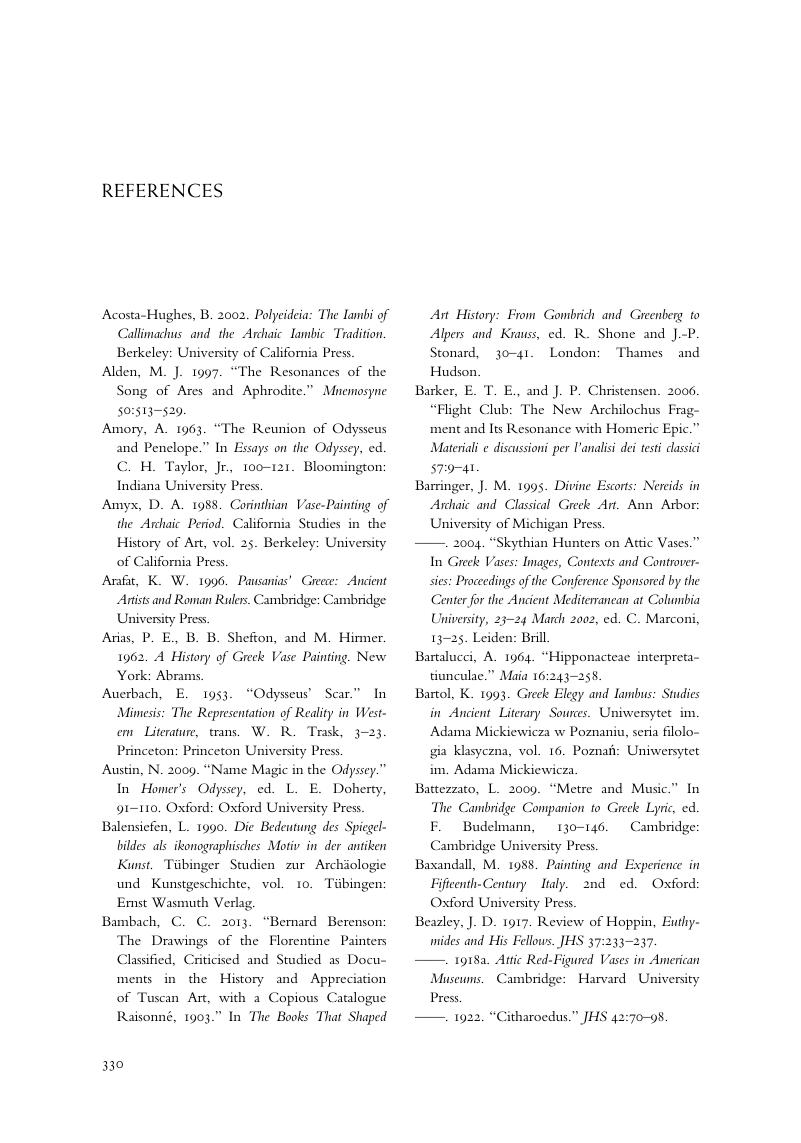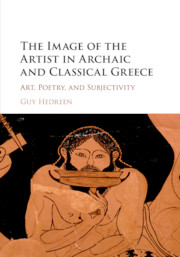Book contents
- The Image of the Artist in Archaic and Classical Greece
- The Image of the Artist in Archaic and Classical Greece
- Copyright page
- Dedication
- Contents
- List of Illustrations
- Preface
- Introduction: “I Am Odysseus”
- Chapter One Smikros and Euphronios: Pictorial alter ego
- Chapter Two Archilochos, the Fictional Creator-Protagonist, and Odysseus
- Chapter Three Hipponax and His Make-Believe Artists
- Chapter Four Hephaistos in Epic: Analog of Odysseus and Antithesis to Thersites
- Chapter Five Pictorial Subjectivity and the Shield of Achilles on the François Vase
- Chapter Six Frontality, Self-reference, and Social Hierarchy: Three Archaic Vase-Paintings
- Chapter Seven Writing and Invention in the Vase-Painting of Euphronios and His Circle
- Epilogue: Persuasion, Deception, and Artistry
- Notes
- References
- Index
- References
References
Published online by Cambridge University Press: 05 November 2015
- The Image of the Artist in Archaic and Classical Greece
- The Image of the Artist in Archaic and Classical Greece
- Copyright page
- Dedication
- Contents
- List of Illustrations
- Preface
- Introduction: “I Am Odysseus”
- Chapter One Smikros and Euphronios: Pictorial alter ego
- Chapter Two Archilochos, the Fictional Creator-Protagonist, and Odysseus
- Chapter Three Hipponax and His Make-Believe Artists
- Chapter Four Hephaistos in Epic: Analog of Odysseus and Antithesis to Thersites
- Chapter Five Pictorial Subjectivity and the Shield of Achilles on the François Vase
- Chapter Six Frontality, Self-reference, and Social Hierarchy: Three Archaic Vase-Paintings
- Chapter Seven Writing and Invention in the Vase-Painting of Euphronios and His Circle
- Epilogue: Persuasion, Deception, and Artistry
- Notes
- References
- Index
- References
Summary

- Type
- Chapter
- Information
- The Image of the Artist in Archaic and Classical GreeceArt, Poetry, and Subjectivity, pp. 330 - 348Publisher: Cambridge University PressPrint publication year: 2015



